





10 poisons capable to save human life
The mankind knows that some toxins at intake in the minimum quantities have therapeutic effect from an extreme antiquity. Many substances recognized poisonous are applied in the medical purposes also today, being the main operating components of the medicines which are officially produced by pharmaceutical industry. Let's tell only about the most known of them.
1. Toxin of a conical snail
Cones are a genus of predatory sea snails (more than 500 types) living preferential in tropics near barrier reeves. They hunt water worms, small fishes and mollusks, immobilizing the production by means of the poison containing neurotoxins. For the person the sting of a cone is very notable, but, as a rule, is not deadly. However, cases when the swimmers who on imprudence disturbed snails sank because of sharp pain or the paralysis of muscles caused by poison are known.
In the course of studying of toxins of conical snails it was found out that the substances which are their part can remove spasms, calm a nervous system. The drugs produced on their basis are the strongest anesthetics which are not causing accustoming. Today drugs which will facilitate symptoms of diseases of Parkinson and Alzheimer are in process of development, and also will be capable to remove epilepsy attacks.

2. Monk's-hood poison
Monk's-hood (the fighter, a skullcap) – a popular adornment plant which decorated practically each seasonal dacha in Russia for a long time. At the same time not all flower growers knew that all parts of their favourite flowers (especially tubers) contain extremely strong poison.
Skullcap toxin (aconitine) oppresses breath and cordial activity, affects the blood circulatory system. Hunters of some tribes of India and Nepal still use it for treatment of tips of arrows. Similarly applied poison of a skullcap and ancient Germans. In some countries of medieval Europe the person at whom found a monk's-hood tuber was considered as the caught poisoner, and was subject to an execution without court.
Despite so gloomy reputation, monk's-hood it was quite actively used in the medical purposes. In the middle of the last century there was a number of the drugs made using parts of this plant. They were used for treatment of the catarral phenomena arising at cold, quinsy, laryngitis and pneumonia and also for simplification of attacks of asthma. Now these drugs are replaced with safer means, and alkaloids of monk's-hood found other application: on their basis homeopathic dosage forms which are used in complex therapy of oncological diseases are created. For example, at a carcinoma cutaneum tincture of tubers of a skullcap is applied outwardly, and tumors of a large intestine treat by means of the candles or ointments containing aconitine. In certain cases drugs of a skullcap accept inside (certainly, it is very careful also at the most strict observance of a dosage and technology of preparation).
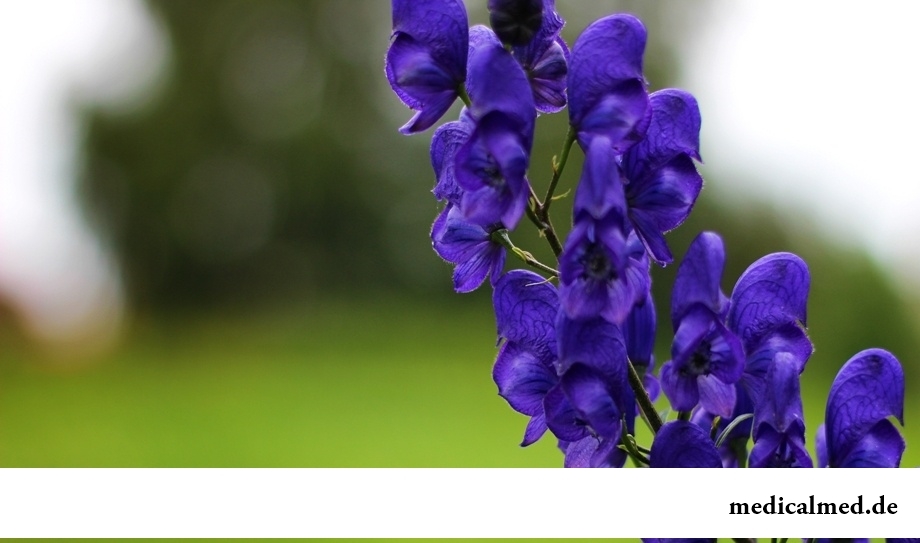
3. Digitalis
Foxglove (digitalis) – a herbaceous plant with large beautiful flowers, widespread in Asia, North Africa and Europe (in our country 6 of its types meet). All of them are very poisonous: the adult can receive a lethal dose of cardiac glycoside of digitalin, having accidentally eaten only one leaf of a plant.
History of a medical use of a foxglove contains more than 15 centuries (the first authentic data on it belong to the 5th century AD). As heart failure medicine drugs of a digitalis began to use with the middle of the 17th century. The great Russian scientist S. P. Botkin extremely highly appreciated therapeutic influence of such means, but noted that the impossibility of definition of an exact dosage and individual reactions of patients do not allow to apply them rather widely. With development of pharmaceutical industry the first of these shortcomings managed to be minimized, and today drugs of a digitalis are the main medicines helping to save chronic cores.
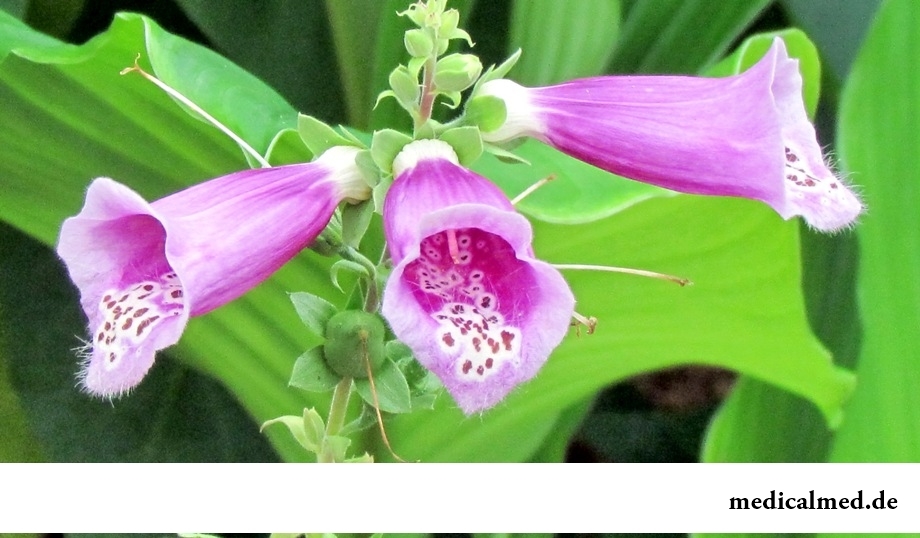
4. Kontortrostatin
Mokassinovy (coppery-headed) shchitomordnik – the venomous snake living in North America. The sting it almost never happens deadly, but the animal is considered dangerous because of the aggression.
Rather recently it became known that protein контортростатин, contained in poison of a shchitomordnik, can oppress growth of cancer cells and interfere with formation of metastasises. Pharmaceutical industry did not begin production of drugs on its basis yet: drugs pass a stage of laboratory testing so far.
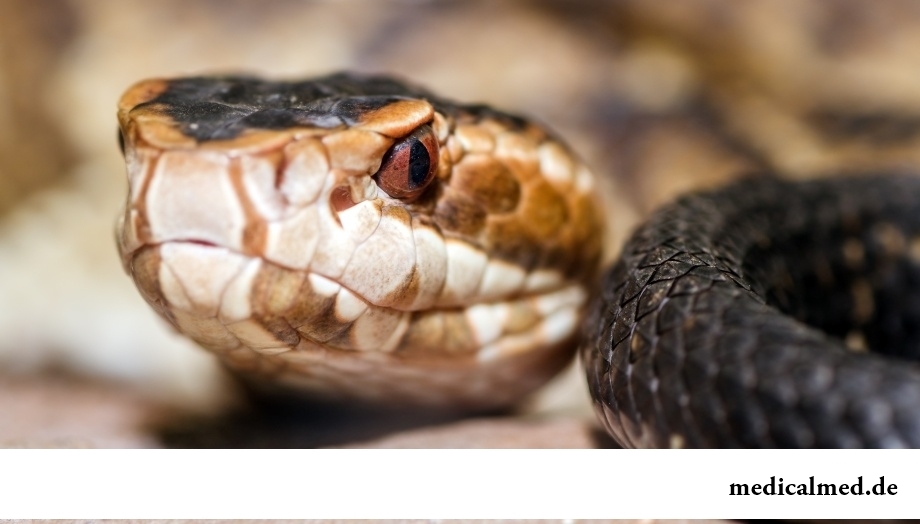
5. Coniine
Hemlock spotty – a plant of family umbrella. Grows in Asia, North Africa and Europe, including in all territory of Russia. Its roots, stalks, leaves flowers and seeds contain a number of alkaloids, the most poisonous of which is coniine. This substance at hit in a digestive tract is very quickly soaked up in blood and blocks work of a nervous system, causing paralysis of motive muscles. In the absence of the urgent help death from suffocation becomes result. In Ancient Greece poisoning with poison of a hemlock was an official way of execution of death sentences.
The plant is dangerous that people can eat its parts by mistake, having mixed a root with horse-radish, leaves – with parsley, and fruits – with an anise. Besides, cases of death of the cattle and poultry when feeding of the crude or dried-up grass are known. Nevertheless, hemlock drugs long since are widely used in traditional medicine and homeopathy. Them disturbances of a menstrual cycle, intestinal and gastric gripes, anemia, headaches, urination delays, dry cough and many other pathologies treat.
The traditional medicine almost does not use drugs of a hemlock of poisoning, spotty because of high probability. However at the end of the last century the Russian scientists patented methods of use of such means in oncological practice (in particular, at treatment of sarcoma).
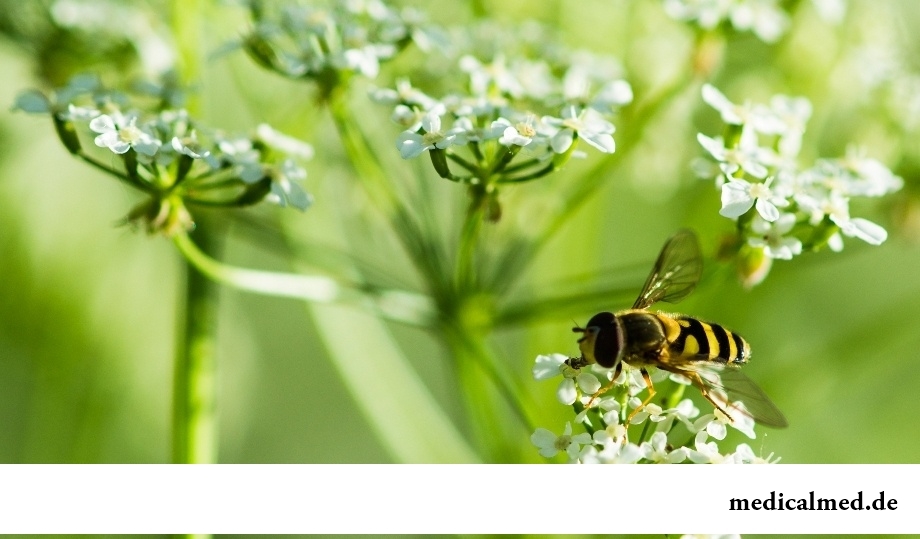
6. Atropine
The alkaloid capable to cause damage to a nervous system and death from suffocation contains in plants of family of a nightshade family: to a datura, belladonna, henbane, etc. Actually this substance is life-threatening only in quite high dosage – the lethal outcome is probable at one-time reception of 400 mkg on kilogram of weight.
The medicine uses atropine long ago and widely:
- In the form of belladonna extract, as a component of the antispastic, gastrointestinal, calming and heart drugs, and also as a part of the candles which are applied at hemorrhoids and mixtures for cough;
- In ophthalmology for expansion of pupils at diagnosis (for example, at an eyeground research);
- In anesthesiology for weakening of reflex reactions during surgeries and for reduction of a tone of a stomach and intestines when carrying out X-ray analyses;
- As an antidote at poisonings with organophosphorous connections (karbofos, a dichlorvos, sarin, etc.) or some poisons of a plant origin (for example, Eserinum or physostigmine);
- In psychiatry for treatment of psychoses.
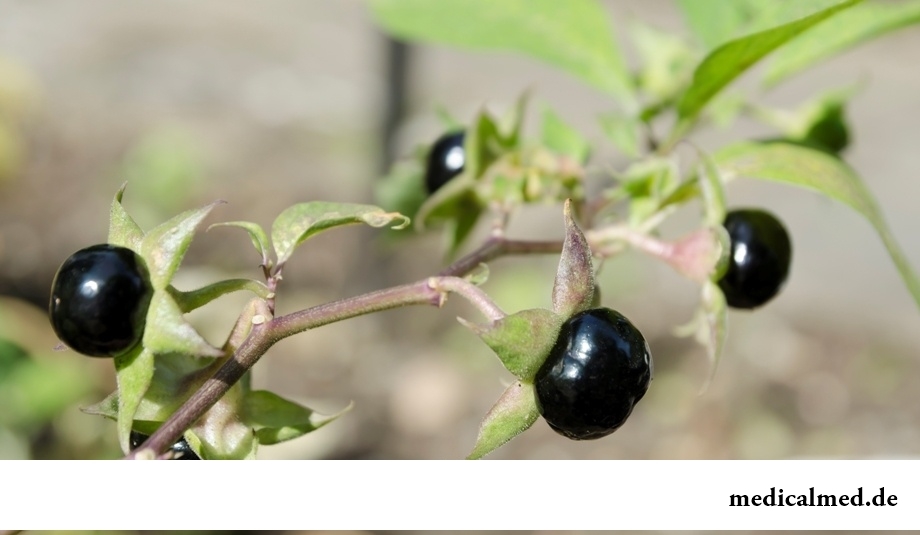
7. Poison of a yellow scorpion
Yellow scorpion (the look living preferential on Arabian Peninsula) – the dangerous arthropod having strong poison and extremely agressive behavior. The sting of a yellow scorpion is deadly as antidote does not exist. The person who endured attack is threatened by a serum death or a fluid lungs.
Recently there were data that one of components of poison of a yellow scorpion can be used in fight against malignant new growths of a brain including the most widespread of them – gliomas. Now drugs pass clinical tests, and their results very encourage. Besides, developments of drugs on the basis of other components of poison are begun. They will be applied to treatment of a diabetes mellitus.
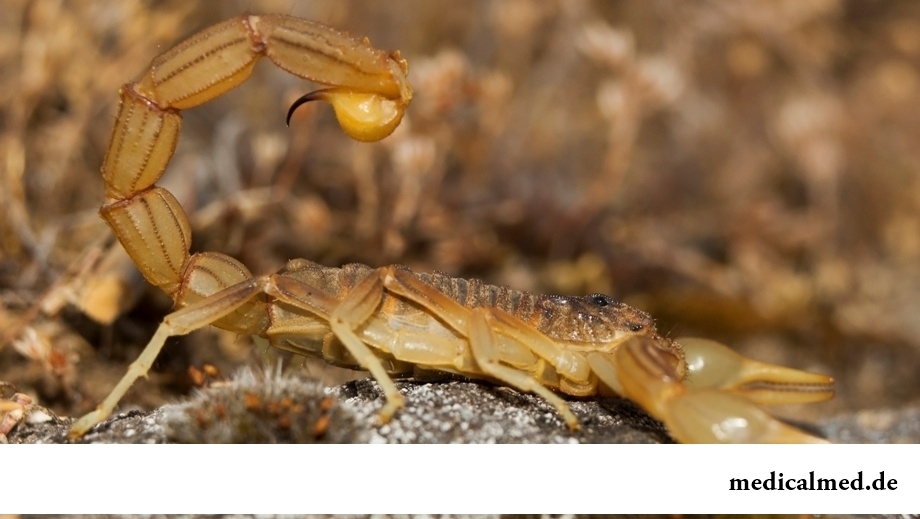
8. Toxin of the Chilean pink bird spider
Pink bird spider – the large spider living in Central and South America. In the nature he hunts crickets and other insects, immobilizing production by means of poison. For human life the sting of a pink bird spider of danger does not represent, except for exceptional cases of heavy allergic reactions.
The American scientists allocated the protein reducing risk of emergence of fibrillation and stabilizing work of a cardiac muscle from poison of the Chilean pink bird spider. On its basis drug which administration helps to save human life during heart attack is created.
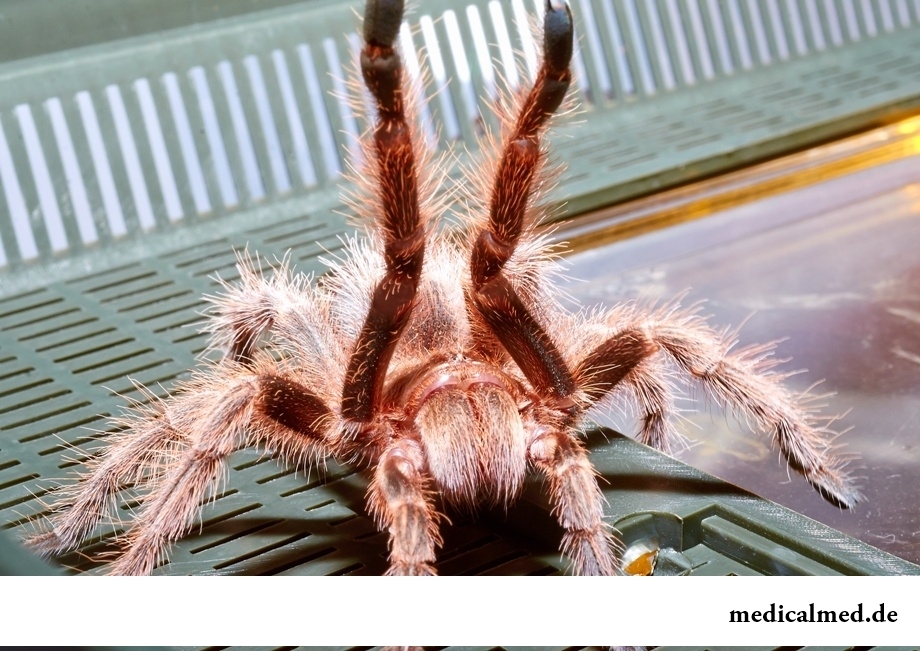
9. Ergot alkaloid
Parasitic fungus the ergot which strikes cereals contains the alkaloids (in particular very toxic – эрготинин) possessing hallucinogenic action and also defiant spasms of smooth muscles, a spasm, development of a cataract, in a big dosage – death. In medieval Europe in the years favorable for wide circulation of an ergot, people often ate the infected grain. At the same time poisonings quite often accepted character of epidemic.
Modern agrotechnical receptions practically liquidate danger of mass poisoning with an ergot. But one of its types is specially cultivated for use in pharmacology. The alkaloids emitted from a fungus are a part of the drugs used for treatment of migraines, some nervous breakdowns and Parkinson's disease, and also uterine bleedings.
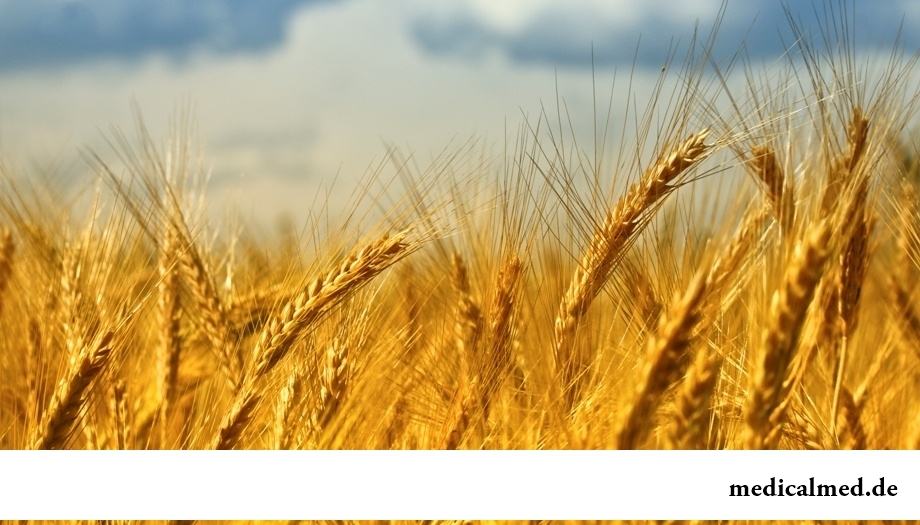
10. Warfarin
This substance was invented in 1948 for fight against rodents, but literally in three years it became clear that warfarin is the strongest anticoagulant and can be applied as means against thromboses.
Today warfarin is appointed to the patients who had a myocardial infarction or operation on installation of artificial valves of heart for reduction of viscosity of blood and decrease in risk of formation of blood clots.
Use of toxins in the therapeutic purposes demands extra care. They cannot be applied without appointment of the doctor at all or to allocate independently from vegetable raw materials. It is very important to remember also that any disturbance of a dosage or mode of reception of toxic agents can lead to the most sad effects.
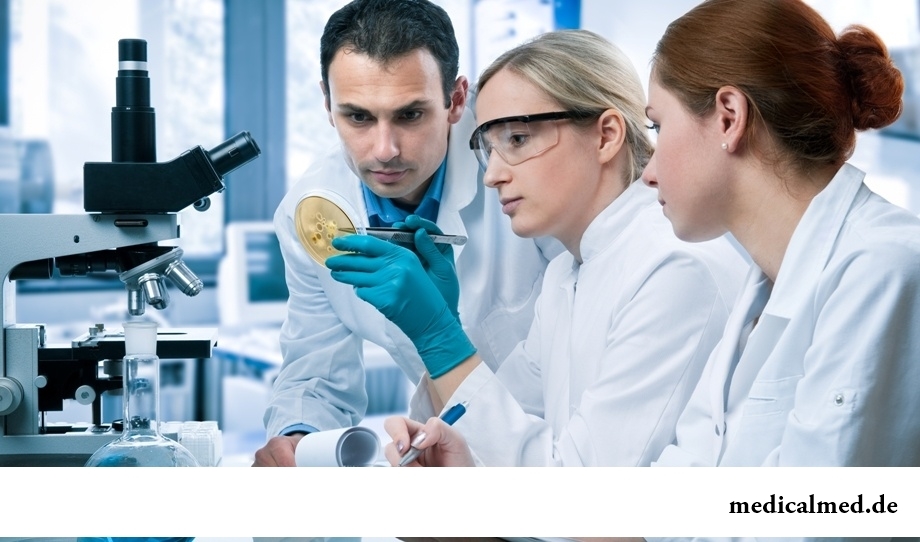
The person accepting antidepressants in most cases will have a depression again. If the person coped with depression by own efforts, he has every chance forever to forget about this state.

Radiological methods of a research are applied in medicine more than hundred years, and thanks to them millions of lives were saved. In m...
Section: Articles about health
All got used long ago that, having addressed the plastic surgeon, it is possible to modify natural parameters of a figure or to minimize the damages put to appearance with ruthless time. Many people (preferential women) worldwide е...
Section: Articles about health
Life activity of one-celled fungi of the sort Candida, related to yeast is a proximate cause of development of candidiasis (milkwoman). Normal these microorganisms are a part of the microflora living in an oral cavity and intestines of most of people and also in a female genital tract. The pathological phenomena are observed when fungi begin to breed too violently. At the same time there is an inflammatory process affecting mucous membranes and which is shown very nepr...
Section: Articles about health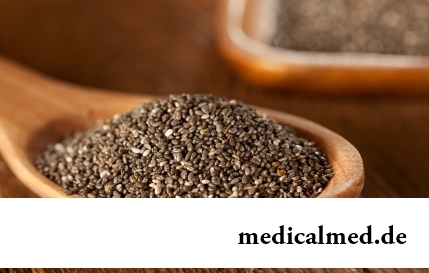
The chia plant, or the Spanish sage, is from South America. The indigenous people of the continent since ancient times used in food it семена:...
Section: Articles about health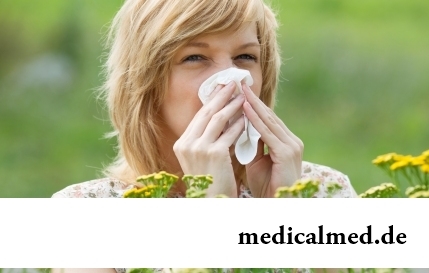
There comes the season of issues. Many Russians already dream of outdoor recreation, trips, beautiful seaside beaches. At this time there is no wish to think of problems with health and other unpleasant things, however there are subjects which require attention. Summer...
Section: Articles about health
The immunity role in growth of the child is invaluable. The proteins-immunoglobulins produced by immune system preserve the child against the diseases capable − owing to an organism weak still − to serve as a stressful factor, to become the reason of many complications and delays in development of the kid. If the immune system weakened, health of the child is under direct threat and needs active actions for strengthening of protective forces of an organism − preferably non-drug....
Section: Articles about health
The modern person not always manages to find housing in the environmentally friendly region and such work which would not do harm здо...
Section: Articles about health
Condition of lips (their morbidity, outward) – one of indicators of health of the person. The peeling, dryness, pallor, and also cracks in corners of a mouth can be not only the cosmetic shortcoming which arose owing to physical damages and weather having sent away...
Section: Articles about health
The body of the person almost for 60% consists of water. It is so important for normal functioning of an organism that loss of only one and a half percent of liquid already leads to the most unpleasant effects. The problems connected with deficit of water can overtake also the healthiest person if he, for example, spends several hours under the scorching sun, without having taken with themselves drink, but is very simple to correct health in this case. It is much more difficult to minimize effects of other reasons about...
Section: Articles about health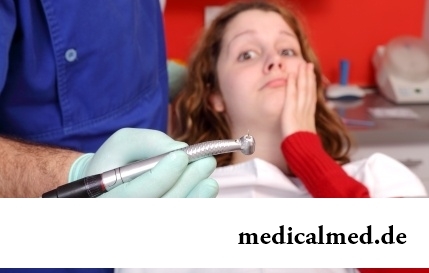
Statistically, can only one of ten of our compatriots brag of a decent condition of an oral cavity. On среднестатистич...
Section: Articles about health
Feeding by a breast - the integral part of ideal motherhood allowing to come into contact with the kid and to create to it healthy immunity since early years. Nevertheless, this important process in life of mother and child can be saddened laktostazy − by a delay of milts...
Section: Articles about health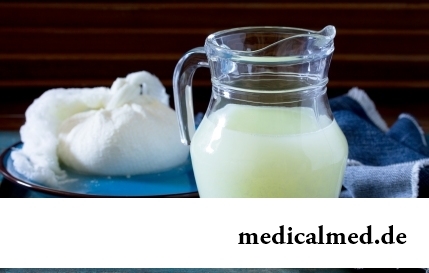
Milk and products of its processing by right occupy one of the main places in a diet of the modern person. They contain proteins, necessary for normal life activity, fats, vitamins and microelements, and are an important part of various medical diets....
Section: Articles about health
The stroke is one of the most widespread diseases of the person, annually in the world about 6 million cases эт are registered...
Section: Articles about health
Many parents of children at the age of 2-4 years face excessively whimsical behavior of the child. The kid exhausts constant crying and whims not only the parents, but also himself. In what the reasons of children's whims. And how to fight with them?...
Section: Slideshow
Coffee - the tonic loved by many for the invigorating aroma and deep taste. Having the stimulating effect, coffee increases working capacity, promotes concentration of attention, fights against drowsiness and improves mood. Statistically, about 30% of inhabitants of the planet regularly use coffee, from them more than 8% are "coffee-achievers" - the persons using more than 3 cups of drink a day....
Section: Articles about health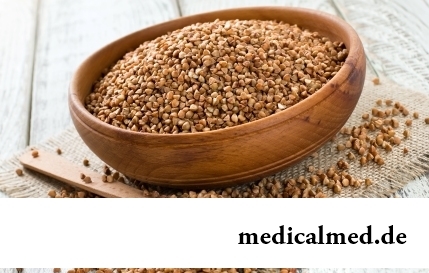
History of cultivation of a buckwheat contains more than five thousand years. Grain which is received from this plant is used for пригото...
Section: Articles about health
The naturopathy sometimes moves as the new direction of medicine, something like fashionable hobby, and there is nothing farther from the truth. This most ancient direction, the word "naturopathy" is translated as "treatment by the nature", and, no doubt, treatment приро...
Section: Articles about health
Each of us repeatedly noticed that the people having the same passport age are sometimes not similar on one-years at all. One at the age of 40-45 years already looks almost an old man, and another and in 60 is young, vigorous and full of life. The matter is that the condition of our health depends not on the number of the lived years, and on degree of safety of an organism. This factor also defines biological age of the person....
Section: Articles about health
People know that thermal sources have salutary force long ago. Treatment by natural waters is one and...
Section: Articles about health
Eyes – unique body on the structure thanks to which the person obtains about 80% of information on the world around: about a form, color, size, the movement, and also many other parameters of objects or phenomena. But whether much we know about the most valuable body...
Section: Articles about health
Any of us is not insured from a heavy illness of the loved one. Happens and so that someone from family members becomes the bed patient, and remains in such state for a long time. It extremely suppresses both the most injured, and all its house which life considerably changes....
Section: Articles about health
(Xerostomia) many people consider feeling of a xerostomia small and easily removable inconvenience. This delusion...
Section: Articles about health
High temperature - a frequent symptom of such widespread diseases as a SARS, quinsy, pneumonia, etc. To reduce heat, having facilitated a condition of the patient, doctors recommend to accept antipyretics, however their use is not always possible. Too h...
Section: Articles about health
Urogenital candidiasis (milkwoman) – a fungal infection which annoys unpleasant feelings in the field of generative organs, being followed by white curdled allocations, an itch, discomfort during an urination, pain. She is called by Candida fungus – the opportunistic organism living on mucous membranes of an organism....
Section: Articles about health
The varicosity has familiarly many, statistically, this disease more than a half of all adult population. As...
Section: Articles about health
Life of the modern woman is very difficult. Opportunities to realize itself are wide: it not only education and career, but also the most various hobbies from sport before needlework. It is not less important to build private life, paying an attention maximum to children, the husband, parents, e...
Section: Articles about health
Extracorporal fertilization – one of the most modern methods of controlling with infertility. So far he already helped a significant amount of married couples to become happy parents. Usually to the EKO procedure difficult and very expensive, resort in those situations when all other ways to help couple to bring the child are inefficient. "Conception in a test tube" yields quite good results in cases of infertility of one of partners, existence at the woman of impassability of uterine tubes...
Section: Articles about health
